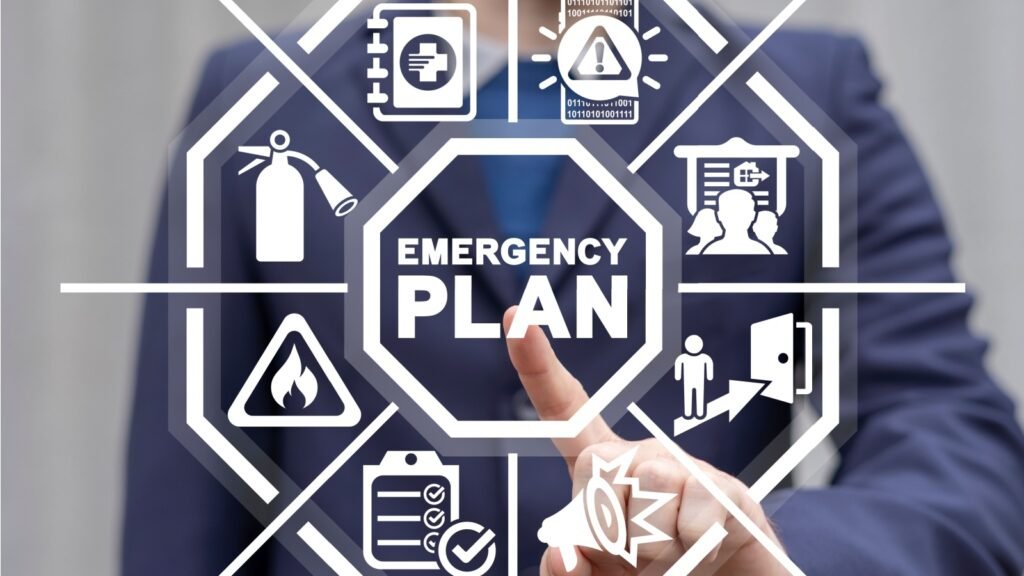Creating a disaster preparedness plan helps ensure your survival with as little hardship as possible when disaster strikes. Knowing the essentials for your plan, how to keep it current, and collecting the necessary supplies can be life-saving.
Being well-prepared means you can meet your basic needs—food, water, and shelter—when there’s little warning of impending disasters.

What Is a Disaster Preparedness Plan?
A disaster preparedness plan outlines necessary supplies, responsibilities, and strategies to safely navigate a disaster with your family or household. Each plan will vary based on personal needs and circumstances, but having one is critical for dealing with emergencies effectively.
Disasters often come without enough warning for adequate preparation, so the only smart option is to have your strategy ready and supplies gathered well in advance. Once a disaster is imminent, securing essentials like food, water, and medical supplies becomes much harder as everyone rushes to prepare.
Important Elements of the Plan
The most effective way to prepare for a disaster is by sitting down with your family or household to develop a comprehensive plan. Although each plan will be unique, there are several key components every plan should include.
Living Prepared: Strategic Planning
Identifying potential emergencies is the foundational step in preparing your disaster plan. Consider all possible scenarios your household might face, from natural disasters to a societal collapse. Detail what supplies and actions are necessary for each situation, taking into account your local weather patterns, possible alerts, and whether evacuation might be necessary.
Knowing how you’ll communicate if cell phones fail is also crucial. Preparing for these specifics in advance can significantly ease the process during an actual emergency.
Responsibilities
It’s important to clarify the roles each household member will play before, during, and after a disaster. Discuss who will handle which aspects of your preparedness plan and how you’ll communicate the completion of these tasks.
Account for the different capabilities of each person in your household, including any needs for special assistance among elderly members, children, or pets. Establishing who is responsible for each task and confirming everyone’s safety are critical steps in your disaster preparedness strategy.
Supplies
When developing your disaster preparedness plan, you need to identify the necessary supplies and the quantities needed. This includes considering medications, dietary restrictions, and other specific health-related equipment.
Include items that aid in movement for those with mobility issues. Remember, ample supplies of food and water are essential, especially for those on medication that requires regular intake. The key is to maintain a sustainable stockpile of these essentials so you’re prepared well before a disaster is announced.
Practice
Regular drills are 100000% necessary once your disaster preparedness plan is in place. This is particularly important in households with young children or elderly members, as practice sessions help identify and resolve any issues in your plan.
These rehearsals give your family a sense of what to expect during an actual emergency, which can help everyone remain more composed. Make sure to communicate as you would in a real disaster scenario during these practice runs.
Other Things to Consider
Planning and running drills are the basics of disaster preparedness planning. But there are many things to take into account for successful preparations.
You’re Not Alone
Remember, in a disaster, your household won’t be the only one affected. While it’s recommended to stay in your home unless it’s unsafe, you should also secure your home against potential intrusions.
In desperate times, even well-meaning individuals might take drastic actions. Fortifying your home and having extra supplies can help you assist neighbors in need without compromising your family’s safety.
Restock Supplies
Set a regular schedule for checking and restocking your supplies. This ensures you don’t find yourself with spoiled food, leaky water containers, or expired medications when disaster strikes. Maintaining a stock of long-lasting supplies that are also practical in emergencies is part of an effective preparedness strategy.
Helpful Tips
Starting your first disaster preparedness plan can seem daunting, but breaking it down into manageable parts can simplify the process.
Make use of resources from organizations like the American Red Cross and Ready.gov to guide your planning. Focus on essentials—food, water, shelter, and medical supplies—and remember, while it’s hard to predict every scenario, preparing for mobility and sheltering in place covers most needs.
When to Prepare
It’s crucial to prepare for disasters long before they’re on your doorstep. A disaster preparedness plan should be established early and updated frequently, especially as the dynamics within your household change.
Adding or losing a family member can significantly impact the resources you need, from additional food and water to extra medications.
Restocking Your Supplies
Regularly schedule restocking activities to keep your emergency supplies fresh and adequate. Create a routine for updating specific items like food and medical supplies, focusing on long shelf life and optimal storage conditions.
While canned goods last for a long time, they’re heavy and might lack necessary nutrients. Alternatively, meal replacement bars are lightweight and can last over two years, offering a more practical solution for emergency nutrition.
When to Update the Plan
Your disaster preparedness plan should be reviewed and practiced by your entire family at least annually. Updates might be necessary after any significant changes, such as new family members, moving homes, or changes in local emergency facilities. Regular revisions ensure that your evacuation routes, shelter locations, and supply sources are current and practical.
Things to Remember in Updating Your Plans
Always include new details like pets, changes in your children’s ages, and any languages spoken at home. Noting frequent visitation sites can be crucial if you need to track down lost family members during a disaster.
Also, document the specifics of any medical devices or equipment used within your household. While some shelters may have medical equipment, they may not have the variety needed for your specific requirements.

